Giochi dell'Oca e di percorso
(by Luigi Ciompi & Adrian Seville)
(by Luigi Ciompi & Adrian Seville)

|
Giochi dell'Oca e di percorso
(by Luigi Ciompi & Adrian Seville) |

|
 |

Torna alla ricerca giochi (back to game search) |
 |
| Game of the Star-spangled Banner or Emigrants to the United States | ||
 |
Versione stampabile
 |
Invia una segnalazione

|
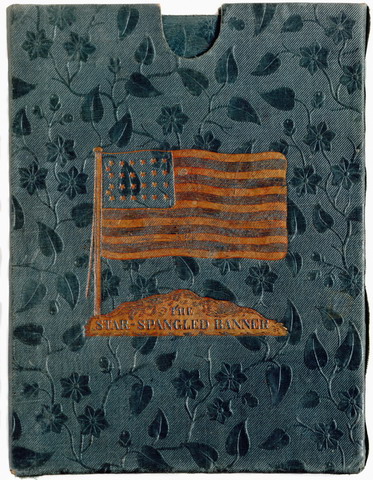 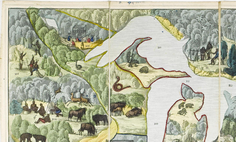 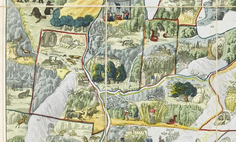  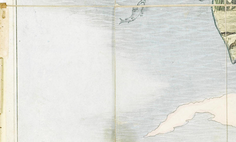 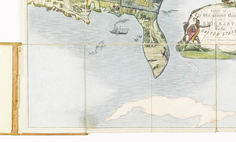  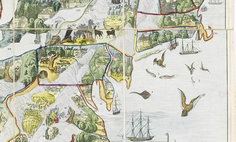  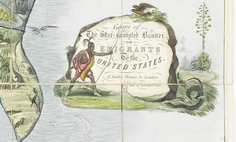 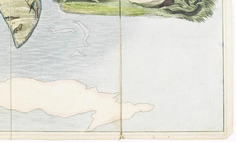 |
primo autore: | Anonimo |
| secondo autore: | Wallis | |
| anno: | 1833 | |
| luogo: |
Inghilterra-Londra |
|
| periodo: | XIX secolo (2°/4) | |
| percorso: | Percorso di 147 caselle numerate | |
| materiale: | carta incollata su tela (engraving on paper with linen backing) | |
| dimensioni: | 669X499 | |
| stampa: | Acquaforte colorata a mano (taille-douce colorée à la main) (hand-coloured etching) | |
| luogo acquisto: | ||
| data acquisto: | ||
| dimensioni confezione: | ||
| numero caselle: | 147 | |
| categoria: | Geografia | |
| tipo di gioco: | Gioco di percorso | |
| editore: | Wallis Edward, 42 Skinner St.t London | |
| stampatore: | Wallis Edward, 42 Skinner St.t London | |
| proprietario: | Collezione E. C. | |
| autore delle foto: | E. C. | |
| numero di catalogo: | 1333 | |
| descrizione: |
Gioco di 147 caselle numerate distribuite sulla carta dell'America. REGOLE: non riportate sul tavoliere (Rules).. CASELLE: mute. REFERENZA 1 "British Museum" - AN322869001 © The Trustees of the British Museum 1893, 0331. 120 Title: Game of the Star-spangled Banner: or Emigrants to the United States. Materials: paper Techniques: hand-coloured etching aquatint Production person: Published by Edward Wallis Production place: Published in London Date: 1833 (c) Schools /Styles: British Description: Game-board with the states of the east coast of the United States with 147 numbered monuments, landmarks and wildlife in slip-case both covered with embossed buckram. Hand-coloured aquatint and etching backed on linen. Inscriptions: Lettered with title on a rock, in front of which stands a man with a bow and arrow wearing a bearskin and feathers and lettered with publication details at bottom" E. Wallis, Skinner Street, London/ Entd. at Stationers Hall" Dimensions: Height: 669 millimetres; width: 499 millimetres Acquisition name: Donated by Lady Charlotte Schreiber. REFERENZA 2 WHITEHOUSE, Francis Reginald Beaman, (pag. 44): THE STAR-SPANGLED BANNER or Emigrants to the United States. Published by Edward Wallis. Undated, circa 1830. Showing the salient features of the United States, with New York a very small spot on the eastern seaboard. The various places of interest are consecutively numbered, and players moved their marker from one to another by means of a pair of dice or a teetotum. REFERENZA 3 Game 63: The Star-Spangled Banner Game of the Star-Spangled Banner, or Emigrants to the United States. London: E. Wallis, Skinner Street, 1833. Copper engraving with original hand color, dissected and mounted on linen, 67 x 51 cm. Lender: John Spear. Refs.: Ciompi/Seville 1333; Whitehouse, plate A and p. 44. This game of 147 spaces begins with the Great Sea Serpent ”rearing its head as high as the topmast of a ship” and ends at New York City. Each space is described in the rule booklet, helping to place the game in its historical time and context. For example, on space 26, Vandalia is shown as the capital of Illinois, which was true only from 1819 to 1839. The game is played not with dice but by drawing small cards from a bag. This is said to be ”more lively” than using dice or a teetotum. ”Observe that as each State has its own independent government and cannot be controlled from Washington … whoever arrives at one of these [State Capital] spaces has the privilege of drawing again immediately”; they act like goose spaces but with an extra throw rather than throw-doubling. Several spaces have special instructions, a selection of which appear below: Space 10: Turkey Buzzard. This bird feeds on carrion and if attempted to be taken vomits the contents of its stomach into the face of its pursuer … Get out of its way and begin again. Space 20: Settler’s Hut. Built with logs and surrounded with a fence of stakes. Stop one drawing to try how you like it. Space 29: Rice is cultivated here … Being your first introduction to a slave plantation stop two drawings to enquire into their condition. Space 34: Copper Head. A very venomous serpent, more dangerous than the rattlesnake – I calculate you had better get out of his way by going back to No. 22. Space 44: WASHINGTON. The seat of general government … The city is planned on a most magnificent scale but at present consists principally of a few inferior houses, with the Post-Office, Bank and a splendid Capitol or House of Representatives; this is built of marble and contains the National Library, as well as a Rotunda and offices for public business. Go on to No. 73. Space 59: Gold Mine, South Carolina. A fortunate discovery! I expect Mr. (blank) you may just draw again. Space 61: Gold Mine, in Georgia. Draw again. That’s the way to go ahead! Space 64: A Sugar Estate. We have now reached a hot country, where the sugar cane is cultivated extensively, and it is found by experience that it can be raised by the occasional labour of white husbandmen, though at present slaves are employed. Go back to No. 29. Space 74: River Mississipi [sic]. The traveller may now embark on the ‘Father of Waters’; but he is a very dirty father; for the stream is thick and muddy ... Go on by one of its numerous steamers to No. 96. Space 87: Shark (Gulf of Mexico). Whoever has the misfortune to fall into the jaws of the monster of the deep must begin the game again. Space 90: Lynch Law (Arkansas). An odious practice, too frequently indulged in, in the states which are at a great distance from the general government. It is no other than a mockery of justice ... Go back to No. 67 (Woodcutter’s hut). Space 102: Burning Forest. It often happens that the prairies and forests take fire from the carelessness of native Indians or settlers ..., men and beast flying from it in all directions. The sight is terrific and sublime. Fly for your life to No. 116. Space 126: Augusta. The capital of Maine … Draw twice to commemorate the settlement of the boundary of this state, so long the subject of dispute between Great Britain and the United States. (Adrian Seville) Exhibitions: - "The Royal Game of the Goose four hundred years of printed Board Games". Exhibition at the Grolier Club, February 23 - May 14, 2016 (Prof. Adrian Seville). - "Instruction and Delight: Children's Games from the Ellen and Arthur Liman Collection" (Yale Center for British Art, 17 January-23 May, 2019). |
|
| bibliografia: |
1) WHITEHAUSE, F.R.B.: "Table Games of Georgian and Victorian Days", London, Peter Garnett, 1951. 2) GOODFELLOW, Caroline: "A Collector's Guide to Games and Puzzles". Secaucus, New Jersey, Chartwell Books-London, Quintet Publishing Limited 1991. 3) GOODFELLOW, Caroline: "The Development of the English Board Game, 1770-1850", in Board Games Studies 1, 1998. 4) GOODFELLOW, Caroline: "Jeux de société. Le guide du collectionneur des jeux de société depuis le XVIIIe siècle jusqu’à nos jours", (Edizione francese) Carrousel MS, 2001. 5) SEVILLE, Adrian: "The Game of Goose: and its influence on cartographical race games" Journal of the International Map Collectors' Society, Winter 2008 N°115 2008. 6) SEVILLE, Adrian: "The geographical Jeux de l'Oie of Europe." In "Belgeo" 2008 3-4 2008. 7) GOODFELLOW, Caroline: "How We Played: Games From Childhood Past", History Press, 2012. 8) QUINN, Brian - CARTWRIGHT, William: "Geographic Board Games". Geospatial Science Research 3. School of Mathematical and Geospatial Science, RMIT University, Australia. December 2014. 9) SEVILLE, Adrian: "The Royal Game of the Goose four hundred years of printed Board Games". Catalogue of an Exhibition at the Grolier Club, February 23 - May 14, 2016. 10) LIMAN, Ellen: "Georgian and Victorian Board Games: The Liman Collection", Pointed Leaf Press, 2017. 11) NORCIA, Megan A.: "Gaming Empire in Children's British Board Games, 1836-1860". Studies in Childhood, 1700 to the Present. Routledge, 2019. 12) SEVILLE, Adrian: "L'arte dei giochi da tavolo. Oltre un secolo di storia e divertimento dalla fine del Settecento all'inizio del Novecento." Edizioni White Star, 2019. 13) PARLAK, Omer Fatih: "Seafearing through the Perspective of Historic Board Games", in DGSM, Köllen Druck+Verlag, Bonn 2020. 14) SEVILLE, Adrian - DEPAULIS, Thierry - BEKKERING, Geert H.: “Playing with Maps: Cartographic Games in Western Culture”. Brill Research Perspectives, Leiden-Boston, pag. 68, 2023. |
|
| "The Development of the English Board Game, 1770-1850" (Caroline G. Goodfellow) | ||
| Instructional Games. "Table Games of Georgian and Victorian Days". (Francis Reginald Beaman, Whitehause) | ||
Vai alla ricerca giochi Vai all'elenco autori